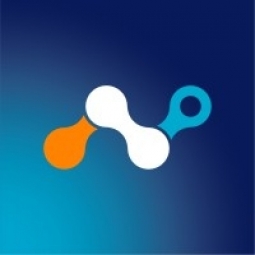公司规模
Large Corporate
地区
- America
国家
- United States
产品
- Netskope
- CASB Inline
- Adv. DLP (Exact Data Match)
- Real-Time Protection for SaaS
技术栈
- Cloud Applications
- SaaS apps
- Office 365
实施规模
- Enterprise-wide Deployment
影响指标
- Productivity Improvements
- Customer Satisfaction
技术
- 网络安全和隐私 - 云安全
适用行业
- 医疗保健和医院
适用功能
- 商业运营
- 人力资源
用例
- 远程协作
- 网络安全
服务
- 云规划/设计/实施服务
- 网络安全服务
关于客户
客户是一家国际知名医院,以其开创性的研究和其他专业而闻名。该医院位于美国。在 COVID-19 疫情期间,医院不得不在很短的时间内将远程员工人数从 200 人调至 20,000 人。医院的 IT 团队每天都在经历升级问题,因为担心未经授权的数据会通过不安全的应用程序四处移动。当时,医院的 DLP 解决方案是根据 HIPAA 字典进行交叉检查,但最多只能达到 70% 的准确率,这意味着近 30% 的时间会出现误报和不必要的升级。
挑战
该医院面临两大挑战,这些挑战与其 IT 环境和云应用的使用有关。第一项挑战是防止任何授权泄露患者数据,同时又不造成不必要的摩擦、误报或安全警报,因为这些会降低医院快速移动员工的协作能力。第二项挑战是防止恶意软件通过一系列 SaaS 应用(无论是托管的还是非托管的、授权的还是未授权的)进入医院网络。确保 Office 365 实施的安全已经是一项艰巨的任务,再加上许多医院团队成员将其链接到各种其他应用程序(包括 Dropbox 等文件传输服务),这项工作变得更加艰巨。
解决方案
医院实施 Netskope 是为了增强数据安全性,大幅提升 DLP 有效性以实现零误报,更好地装备远程员工,并实现让事情变得简单和安全的罕见平衡。内联 CASB 很快成为改善数据保护和减少误报的主要需求——特别是对数千个应用程序(托管和非托管)的可见性和控制级别,包括用户、文件名和活动。CASB Inline 帮助医院及其现在分布广泛的护理人员、研究人员和其他利益相关者自信地管理和防止云应用程序实例之间意外或未经批准的敏感数据移动,并全面了解应用程序风险、用户风险和访问风险。
运营影响
数量效益

Case Study missing?
Start adding your own!
Register with your work email and create a new case study profile for your business.
相关案例.

Case Study
Hospital Inventory Management
The hospital supply chain team is responsible for ensuring that the right medical supplies are readily available to clinicians when and where needed, and to do so in the most efficient manner possible. However, many of the systems and processes in use at the cancer center for supply chain management were not best suited to support these goals. Barcoding technology, a commonly used method for inventory management of medical supplies, is labor intensive, time consuming, does not provide real-time visibility into inventory levels and can be prone to error. Consequently, the lack of accurate and real-time visibility into inventory levels across multiple supply rooms in multiple hospital facilities creates additional inefficiency in the system causing over-ordering, hoarding, and wasted supplies. Other sources of waste and cost were also identified as candidates for improvement. Existing systems and processes did not provide adequate security for high-cost inventory within the hospital, which was another driver of cost. A lack of visibility into expiration dates for supplies resulted in supplies being wasted due to past expiry dates. Storage of supplies was also a key consideration given the location of the cancer center’s facilities in a dense urban setting, where space is always at a premium. In order to address the challenges outlined above, the hospital sought a solution that would provide real-time inventory information with high levels of accuracy, reduce the level of manual effort required and enable data driven decision making to ensure that the right supplies were readily available to clinicians in the right location at the right time.

Case Study
Gas Pipeline Monitoring System for Hospitals
This system integrator focuses on providing centralized gas pipeline monitoring systems for hospitals. The service they provide makes it possible for hospitals to reduce both maintenance and labor costs. Since hospitals may not have an existing network suitable for this type of system, GPRS communication provides an easy and ready-to-use solution for remote, distributed monitoring systems System Requirements - GPRS communication - Seamless connection with SCADA software - Simple, front-end control capability - Expandable I/O channels - Combine AI, DI, and DO channels

Case Study
Driving Digital Transformations for Vitro Diagnostic Medical Devices
Diagnostic devices play a vital role in helping to improve healthcare delivery. In fact, an estimated 60 percent of the world’s medical decisions are made with support from in vitrodiagnostics (IVD) solutions, such as those provided by Roche Diagnostics, an industry leader. As the demand for medical diagnostic services grows rapidly in hospitals and clinics across China, so does the market for IVD solutions. In addition, the typically high cost of these diagnostic devices means that comprehensive post-sales services are needed. Wanteed to improve three portions of thr IVD:1. Remotely monitor and manage IVD devices as fixed assets.2. Optimizing device availability with predictive maintenance.3. Recommending the best IVD solution for a customer’s needs.

Case Study
HaemoCloud Global Blood Management System
1) Deliver a connected digital product system to protect and increase the differentiated value of Haemonetics blood and plasma solutions. 2) Improve patient outcomes by increasing the efficiency of blood supply flows. 3) Navigate and satisfy a complex web of global regulatory compliance requirements. 4) Reduce costly and labor-intensive maintenance procedures.

Case Study
Cloud-based healthcare solution for Royal Philips
Royal Philips wanted to launch its cloud-based healthcare solution HealthSuite Digital Platform in China to deliver services to help cope with challenges related to urbanization and population growth. Philips wanted to achieve this goal by combining mobile, cloud computing and big data technologies. To bring this platform and product to market, Philips required cloud computing and local technical service capabilities in China, in addition to a flexible IT infrastructure that could handle user requests.








